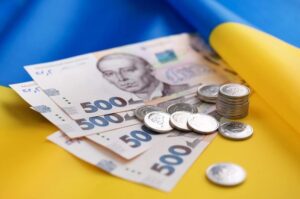
Croatia became the 27th member of the Schengen Area on Thursday following a decision in Brussels by the EU Justice and Home Affairs Council, French newspaper Le Figaro announced.
The decision, the newspaper reported, citing the Czech presidency of the EU Council, will take effect on January 1, 2023.
At the same time, the media noted, the application of Bulgaria and Romania to join the free movement zone still remained unsatisfied.
The Schengen zone began its existence in March 1995, when border controls were abolished at the internal borders between the seven states: Belgium, Germany, Spain, Luxembourg, the Netherlands, Portugal and France.

With the beginning of a full-scale Russian invasion, A.G.R. Group. Group and MK Merchants SA, owned by businessman Misak Khidiryan, reoriented logistics routes from Ukrainian seaports to the EU market via road and rail transport as well as the river ports of Reni and Izmail.
Misak Khidiryan told Interfax-Ukraine news agency that the group of companies will continue to export part of its agricultural products through the land border crossings with the EU and along the Danube River even after the liberation of the occupied territories from the Russian troops and Ukraine’s resumption of full trade in the Black Sea.
According to his data, after the full-scale war began, the group of companies searched for elevator facilities in Western Ukraine and transported crop stocks there from the central regions of the country. Later on, logistic channels by road and rail were established for the marketing of agricultural products in the European Union. The group of companies already has an agreement to cooperate with a European trading company with quite a powerful infrastructure throughout Europe, where they have already started supplying their agricultural products.
“In addition, we have agreed that we will work together to load their volumes and have given guarantees that after our victory and the liberation of the occupied territories, we will maintain our partnership, even when the ports are opened and maritime logistics are again a priority. Perhaps even consider with the board of the A.G.R. Group to buy new clusters in the West of Ukraine for a more convenient partnership,” Misak Khidiryan told the agency.
According to him, deep-sea ports are currently inaccessible for export, so road and rail transport is used, as well as Reni and Izmail ports. However, such logistics is much more expensive than sea exports, and it also involves a number of difficulties, such as the inability of drivers – its citizens – to travel outside Ukraine, or large queues of ships in the ports.
However, in addition to the European direction, activity in several countries of the Middle East has been stepped up. “Our offices are operating there and we are running domestic sales to the maximum, because we need additional margin due to high logistics costs. We have to clearly understand that the logistics leverage has increased, freight prices have gone up, energy and fuel prices have gone up, and as a result we are spending about $200 on a ton of exports. $200 on our commodity is a huge amount of money, we used to spend $45-50 per ton,” stated Misak Khidiryan.
Agroholding A.G.R. Group includes more than 20 companies. The main direction of its activity is trade in agricultural products, cultivation and storage of crops, as well as cattle breeding.
A.G.R. Group cultivates land in Poltava, Kiev, Chernigov, Nikolaev and Sumy regions. All grown products are sold on foreign markets.
The president of the holding and head of its supervisory board is businessman Misak Khidirian.
A.G.R.GROUP, agricultural cluster, AGRICULTURAL PRODUCTS, Khidiryan, Merchants, RIVER PORT'S

Ukraine has received $27 billion in external financing since the start of Russia’s full-scale military invasion, this amount is expected to grow to $30 billion by the end of the year, Finance Minister Serhiy Marchenko said on the air of a national telethon.
“The need for 10 months of the war is $50 billion. Partly our partners helped us, partly we financed through domestic borrowing, including the monetization of financing by the National Bank of Ukraine,” he said.
According to the Ministry of Finance, as of December 7, total external financing amounted to $28.26 billion, of which $27.26 billion was used to finance the budget deficit, and another $1 billion – for reconstruction. Another $11.66 billion, or 370 billion UAH was provided by the National Bank through the purchase of government bonds.
Marchenko pointed out that next year’s state budget financing needs are estimated at $38 billion. “It is less than this year, but everything depends on how things develop on the military front… Own revenues are not enough even to meet the basic needs of security and defense,” the minister said.
According to him, besides EUR18 billion from the EU, Ukraine expects from the USA $9,9 billion for 9 months, as well as bilateral support from other G7 members, including Great Britain, Canada, Japan, with whom negotiations are already under way, and the World Bank and the IMF.
In this regard, Marchenko stressed the importance of creating a “financial Ramstein” – not only as a political platform, but also as a platform to address working issues – rhythm, predictability and possible funding delays.
“I can not say about the exact dates, but negotiations are underway, quite actively, at the working level meetings (take place) every two weeks,” he described the current situation on the creation of such a format.
Commenting on Hungary’s blocking of the decision to allocate EUR18 billion to Ukraine next year, Marchenko called the news “unpleasant, but no more.”
“I think that the EU will find ways to solve this issue. Already received signals that there are several steps, how it can be done, so we have no special worries about it. I think everything should be in order,” the head of the Ministry of Finance of Ukraine said.
As reported, the National Bank of Ukraine on Thursday projected a total external financing of the country this year at $ 31 billion.

In contrast to the summer months, the situation in the foreign exchange market is currently much better, as evidenced by the supply-demand ratio, deputy head of the National Bank of Ukraine Yuriy Geletiy said.
“An important indicator is the volume of interventions: $2 billion in October and $1.6 billion in November, whereas in June it was $4 billion,” he said at a briefing on Thursday.
According to him, exports are growing which together with expectation of international aid makes it possible to expect growth of currency receipts.
Geletiy reminded that international reserves of the NBU at the beginning of December exceeded the prewar level and amounted to about $28 billion, which provides 3.5 months of future import.
The Deputy Chairperson of the National Bank also said that the average daily volume of transactions between the banks had increased, but they were still “objectively small” – $65 million in November against $38 million in September.
According to him, the ability of the currency market to self-balance is one of the conditions for a return to a floating rate, but unfortunately, that’s not on the market at the moment, and the National Bank is out there with interventions.
Geletiy added that the second important precondition for returning to a floating exchange rate is the ability of inflation to be a nominal anchor, but now its level does not allow to anchor expectations, such a function is performed by a fixed hryvnia rate.
He stressed that under such conditions, the National Bank can’t name specific dates when the return to a floating exchange rate may take place.
“So now we live in this environment. Our system is working efficiently. We monitor the situation from our side, adapt our currency issues in the context of regulation and adapt to the current conditions,” he said.
In turn, Head of the National Bank Andriy Pyshnyy noted that with each successive attack Ukrainians only add to the strength of the national currency – its rate strengthens.
He pointed to the convergence of the official exchange rate of the hryvnya and the exchange rate in the cash market lately.
Foreign trade turnover by most important positions in Jan-Aug 2022 (export)

SSC of Ukraine

The stock indices in Western Europe are changing weakly and multidirectionally during the trading on Thursday.
The Stoxx Europe 600 composite index of the largest companies in the region was down 0.16% to 435.51 points by 11:29 a.m.
Germany’s DAX stock index rose 0.01%, France’s CAC 40 rose 0.14%, the British FTSE 100 declined 0.08%, Italy’s FTSE MIB and Spain’s IBEX 35 lost 0.19% and 0.18% respectively.
Investors continue to fear the effects of the slowing world economy and further tightening of the monetary policy of major central banks to curb inflation, writes Trading Economics.
The Federal Reserve (Fed) and the European Central Bank (ECB) are expected to raise key rates again next week to combat inflation, which is still at too high levels.
The Fed is expected to slow the pace of key interest rate hikes to 50 basis points from 75 bps. Analysts expect the ECB to raise rates by 50 bps as well.
Investors, already concerned about the tightening of monetary policy of the Federal Reserve, should prepare themselves for the fact that U.S. interest rates will continue to rise until May 2023, believes chief economist of Goldman Sachs Jan Hatsius. Expect a decline in borrowing costs next year, in his view, it’s not worth it, The Wall Street Journal reported.
The most significant decline in the Stoxx 600 Index is in shares of Swiss locomotive and railcar maker Stadler Rail AG, which are down 4.5%.
Aroundtown S.A., a real estate company, is showing the strongest gains. – up 7.2%.
Shares of Ryanair Holdings PLC are up 1.4%. The Irish low-cost carrier extended its contract with chief executive Michael O’Leary through July 2028.